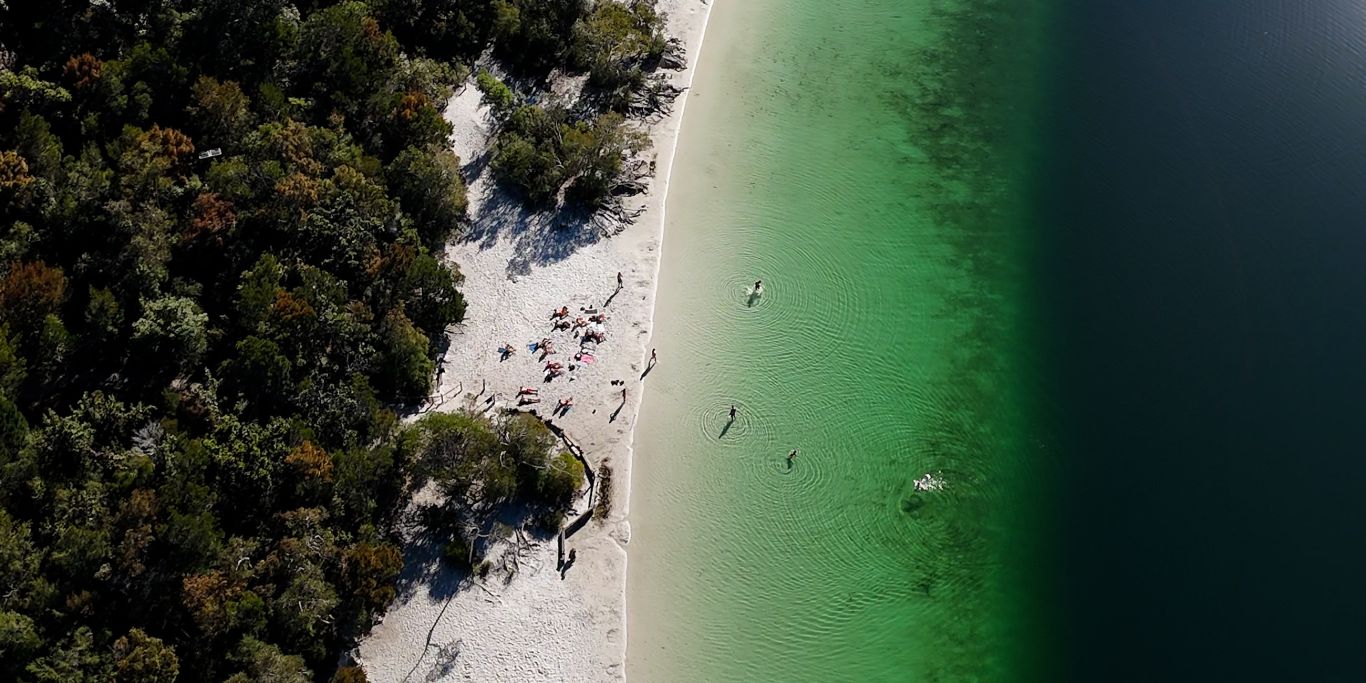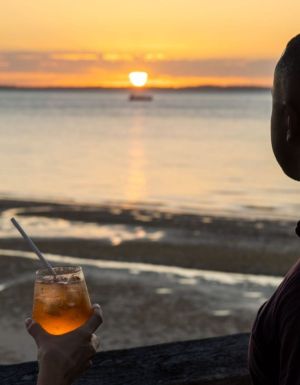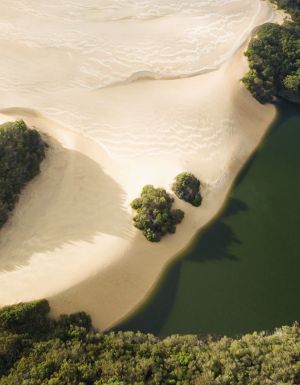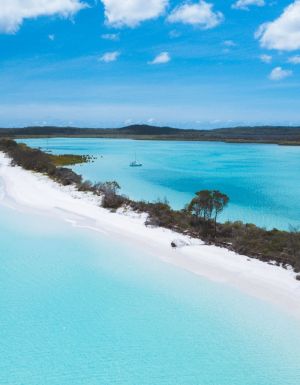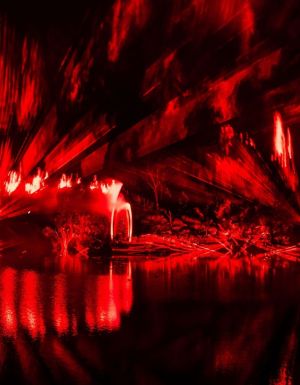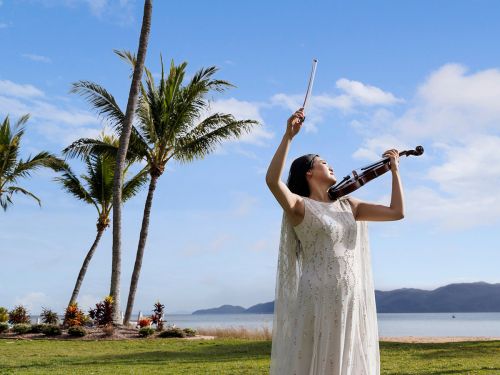Explore K’gari and you will not only discover the rainbow-coloured cliffs sacred to the local Indigenous people, or a coastline that swoops and soars, or the astonishing turquoise waters of a lake so translucent you want to stay immersed in it forever.
For the world’s largest sand island, there is a surprising number of things to do on K’gari (formerly Fraser Island). From wandering through thick rainforest, to spending the whole day hopping from lake to pool to lake, to experiencing the island’s ancient and modern history. It’s clear that a trip to K’gari is more than just a day trip.
Whether you’re looking for a relaxing holiday or a natural adventure, buckle up. Here are 12 things to do on K’gari, appropriately named by the local Butchulla tribe to mek’gari an ‘paradise’.
1. Explore the rainforest
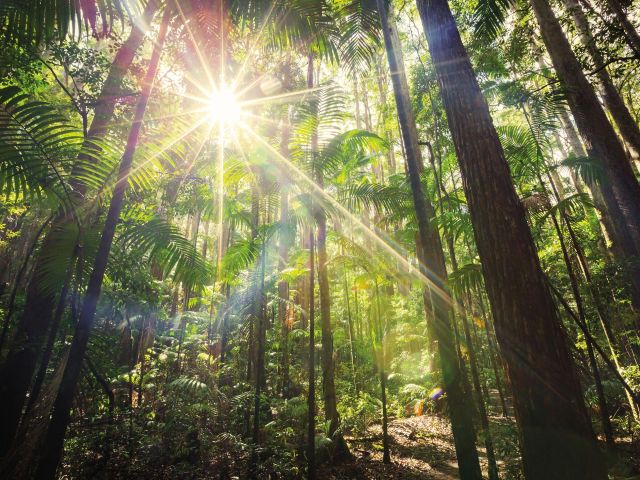
Fraser Island is the only place in the world where rainforest is found growing on sand dunes at elevations of more than 200 metres. The low-lying shrubs and heaths on the island are of great evolutionary and ecological significance as they make up the most complete age sequence of coastal dune systems anywhere in the world.
The diverse vegetation on the 184,000-hectare island also includes towering kauri pine and piccabeen palms, flora-rich shrubland and heath and subtropical rainforest. Don’t miss: The magnificent wildflower displays in spring and summer on the island, which is about three and a half hours’ drive north of Brisbane.
2. Lake McKenzie
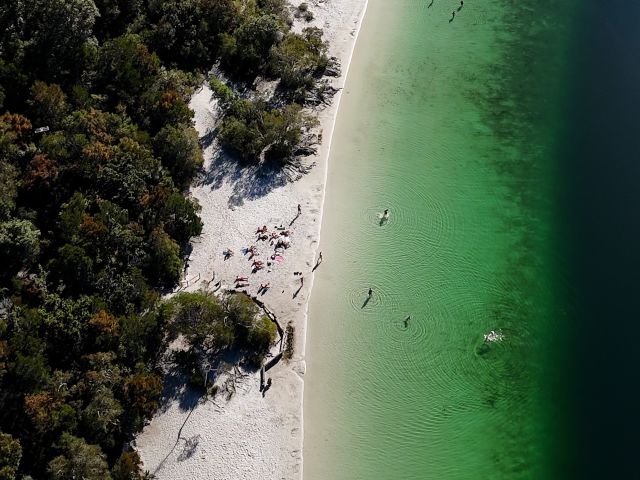
Sit and watch the way young children approach Lake McKenzie/ Boorangoora: they advance at speed, arms pinwheeling, and propel their bodies into the water again and again. This is the way to do it. The crowds that converge around the lake make this a top spot for people-watching. Choose your tribe: dreadlocked hippies sitting in the shade of an eucalyptus tree; flashpackers with their selfie sticks prodding the sky; and families advancing and retreating from the water.
The white sandy beach tinged with a turquoise swirl of water is one of the most visited natural wonders in Australia. Lake McKenzie is a ‘perched’ lake, meaning it contains only rainwater, and it is set into the landscape like a precious stone.
It’s accessible by 4WD or on foot when following a 20-kilometre return loop trail from Kingfisher Bay Resort.
3. Indian Head
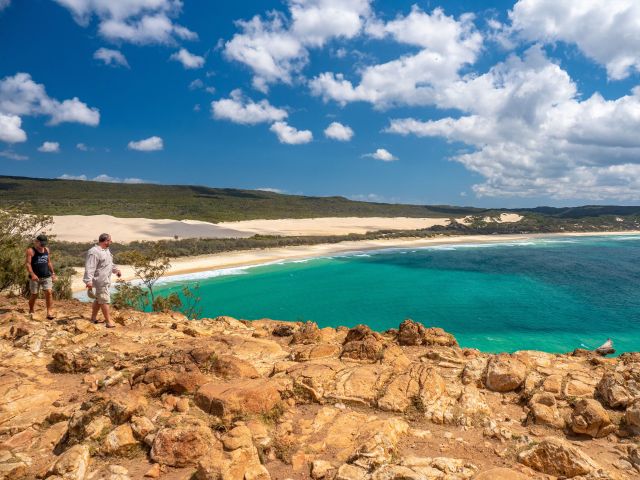
Located on the eastern side of K’gari, Indian Head is a rocky outcrop said to have been originally created by volcanic activity up to 80 million years ago.
Captain Cook first caught sight of the Butchulla people in 1770 and named the eastern beach after them; the term ‘Indian’ was used to describe Indigenous people centuries ago. Known to the local Indigenous people as tuckee (stone), the distinctive head shape of the rocky cliffs made it one of K’gari’s most notable attractions.
It’s both an iconic landmark and a natural lookout for spotting sea life: look out over the ocean for manta rays, dolphins, sea turtles and whales.
4. The Cathedrals
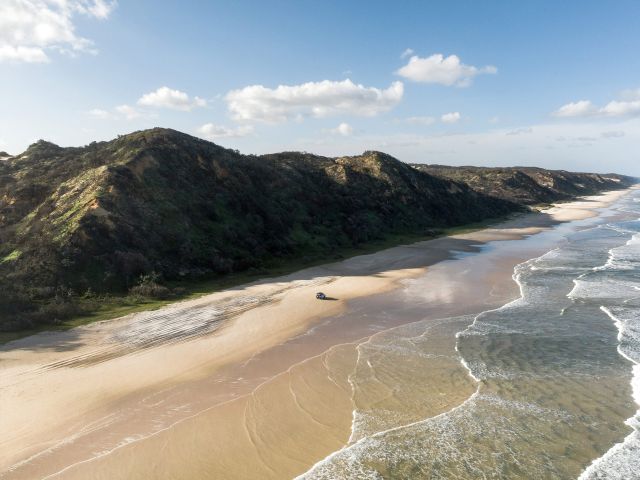
These cliffs of coloured sands are permanently stained in various shades of rust and ochre and are one of many sacred sites on the island for the local Butchulla people. According to Dreamtime legend, the cliffs were formed long ago as a result of a love story gone wrong.
Watching The Cathedrals change colour as the sun moves across the sky and the first rays of dawn paint the pinnacles is like watching the final touches being applied to an artwork. Over time, the elements have clawed at the cliffs and resulted in this breathtaking construction.
5. Champagne Pools
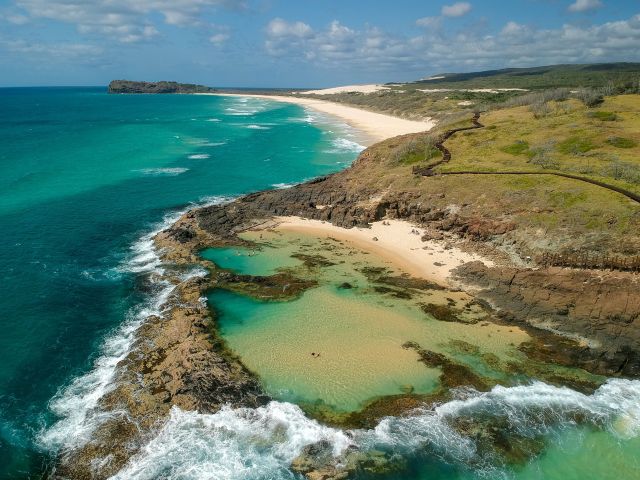
Why Champagne? Because of the pleasant fizzing sensation that happens when waves crash into the water of the pools. Sit back and relax in the blue-green water of this natural spa bath – or we should say, baths. The Champagne Pools are a series, hemmed in by rocks and polished smooth by the sea. Soak in the gorgeous ocean views while you do.
The pools are about 2.2 kilometres north along the 75 Mile Beach from Indian Head. Go at low tide when the sea is calm – while they are relatively safe, caution should be taken at high tide.
6. 75 Mile Beach
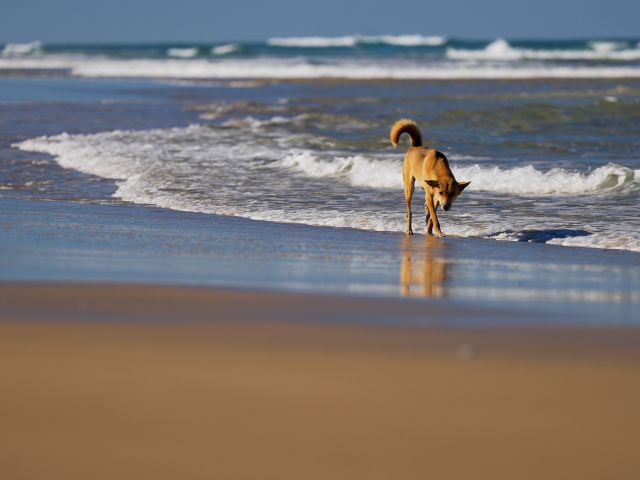
75 Mile Beach is long, surprisingly long despite its very obvious name. Yes, it is 75 miles long – or over 120 kilometres – but it’s not until you’re standing on this straight, sandy stretch that you realise the reality of those numbers. Looking out onto the horizon here makes you understand why people once thought the world was flat: it’s all straight lines of blues and yellows, from the sand between your toes to the cloud-spotted skies.
This spectacular stretch of sand traces the eastern side of K’gari, and is officially a national highway and runway – it’s one of the few beaches in the world where light aircraft can actually land and take off.
You’ll spot plenty of 4WDs pulled over along this beach, its occupants trying their luck catching a fish or two. It’s a great place to pass a few hours, or to carve off a trail to places like Eli Creek or stop at the famous shipwreck (more to come).
7. Eli Creek

Speaking of Eli Creek pours up to four million litres of clear, fresh water into the ocean every hour. The result? A pleasantly steady – but not scary – current that will also carry humans on floatie devices along it. I don’t care how old you are; it’s surprisingly fun.
Even if you don’t want to ride the tide, it’s a popular picnic spot with a boardwalk following the creek inland. So you can still have a gander at it, and the surrounding banksia and pandanus.
8. The Maheno Shipwreck

The SS Maheno is a beacon for visitors to K’gari because it’s a bit of lingering evidence of history: a cyclone devastated parts of the Queensland coast in 1935. The ship was on its way to a Japanese shipyard to be turned into scrap metal when its tow line snapped; it is now better known for being washed ashore on Fraser’s Eastern beach than for being the fastest ship to cross the Tasman between Australia and New Zealand.
Formerly a First World War hospital ship, the skeleton of the SS Maheno has a broken hull that looks like cracked ribs. It’s worth seeing, especially with that backdrop of waves, dunes and tangled trees.
9. Lake Wabby & Hammerstone Sand Blow

As the deepest lake on the island (it’s 11.4 metres deep at its lowest point), the half-moon shape and dark green water of Lake Wabby is a popular sight on K’gari. It’s what know as a barrage lake, meaning it was formed when sand dunes shifted over time, blocking a body of water before it could reach the ocean. Brush box, satinay, tallowwood trees and more form a striking, thick green border around the lake.
Perhaps even more striking than the lake is the massive collection of sand dunes right next to it, creating Hammerstone Sand Blow. Walking along here feels like you’ve stepped right onto a desert moon out of Star Wars.
There are two ways to get here. The most common way is to park on 75 Mile Beach (where signs point to Lake Wabby) and walk 1.5 hours (return) along the bush track. The secret way is to park at Lake Wabby Car Park off Cornwall’s Break Road, and walk a steep but short 15-20 minutes.
10. Central Station
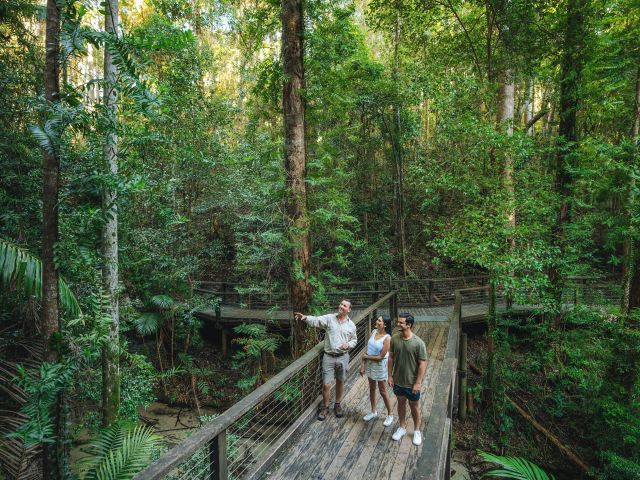
Central Station was originally home to a community of more than 100 people during its days as a forestry camp when timber logging was the thing here in the 1920s. Thankfully, chainsaws are a thing of the past on World Heritage-listed K’gari.
Lace up your boots for a walk along the boardwalk that hugs the curves of Wanggoolba Creek as it snakes through the rainforest. The creek was used for Secret Women’s Business before the land was cleared for forestry operations. These days, the picnic area sits amid a botanical garden.
11. Indigenous history
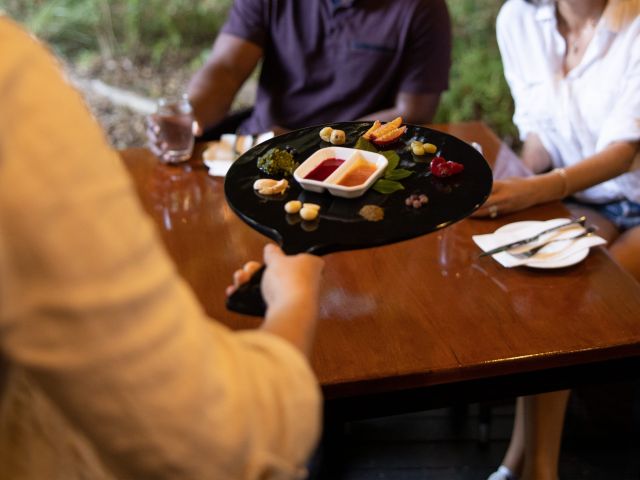
The original inhabitants of K’gari were the Butchulla people, who occupied the land for about 5000 years. There are around 500 Indigenous archaeological sites located across K’gari, which are rich with Dreamtime stories.
It is also equipped with ingredients from the original Indigenous pantry. You can taste some of these native Australian flavours during a Bush Tucker Talk + Taste session at Kingfisher Bay Resort. See, touch and taste native ingredients in their raw state before the chef turns them into a tasty meal.
12. Kayaking through the mangroves
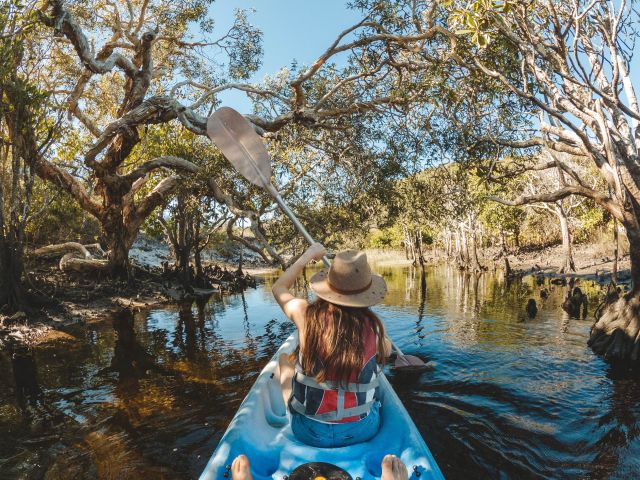
Another brilliant way to get out on the water (and get a very good workout) is taking to a kayak and exploring K’gari’s beautiful mangrove system.
Hire one (or a canoe or stand-up paddle board) from Kingfisher Bay Resort to explore on your own. If you’re not so comfortable with a paddle and would like extra support, or you’d just like to learn more about the ecosystems you’re adventuring through, join a tour led by Kingfisher Bay Resort’s rangers. Check at the resort’s front desk for timings.
Still want more K’gari tips? Let the experts guide you on one of our picks of top K’gari tours.
Article originally written by Carlka Grosetti and updated by Kassia Byrnes.

